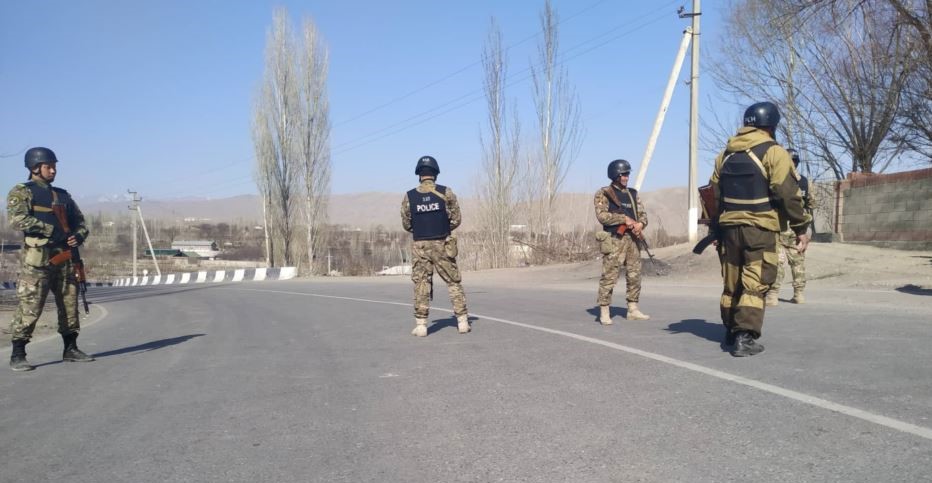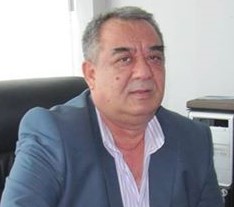As the number of clashes and conflicts increases, the local population on both sides demands from their authorities more active and effective work in resolving disputes along the border.
Follow us on LinkedIn

Since early 2020, the government delegations of the two countries on the delimitation and demarcation of the Kyrgyz-Tajik state border have held only two meetings. These were in January and February.
Until March 1 of this year, topographic working groups had to work out agreed options for the exchange of equivalent land plots between Kyrgyzstan and Tajikistan, as previously reported by CABAR.asia.
The length of the Kyrgyz-Tajik border is more than 970 km, of which more than 450 km are not yet delimited and demarcated.
According to some sources, by March 1, the parties were to add another 111 km of the newly defined sections to 520 km.
However, as reported by the Kyrgyz government, due to the COVID-19 pandemic, no new meetings were held then.
On February 11 of this year, the Deputy Prime Minister of Kyrgyzstan, Jenish Razakov, who led the intergovernmental commission on the delimitation and demarcation of the state border between the two countries, resigned. He was replaced by the new Deputy Prime Minister Akram Madumarov.
Is Russia needed as a mediator?
Amid conflicts on the Tajik-Kyrgyz border, Moscow announced its readiness to provide “mediation services”.

This was stated on May 26 by Russian Foreign Minister Sergey Lavrov while speaking to reporters after a meeting of the Foreign Ministers of the CSTO member states.
“We urge our allies to engage in a dialogue so as to refrain from the use of force as much as possible. We are ready to provide our mediation services. And we believe that the sooner the situation calms down, the better it will be,” Radio “Azattyk” quotes Lavrov.
However, both Dushanbe and Bishkek refused Moscow’s “mediation services”.
On May 29, the Ministry of Foreign Affairs of Tajikistan sent a note verbale to Moscow stating that “activities in the field of delimitation and demarcation of state borders are an internal affair of the Collective Security Treaty Organization (CSTO) member states and are conducted exclusively on a bilateral basis.”
The note states that “involving third parties” in this negotiation process is “not appropriate”.
The response of Kyrgyz diplomats was also negative, but more restrained.

“The Kyrgyz side considers it imperative to conduct bilateral negotiations aimed at the final results,” Ulan Dyikanbaev, the official representative of the Ministry of Foreign Affairs of the Kyrgyz Republic, commented on Lavrov’s proposal.
Local experts ambiguously accepted the proposal of Sergey Lavrov. According to the view of Tajik expert Nurali Davlat, neither Dushanbe nor Bishkek believe in the sincerity of Moscow, and consider that the Kremlin is pursuing its own interests.
“Probably, in both republics they fear that, acting as a mediator, Russia can protect the interests of one of the parties in exchange for fulfilling its demands. And these demands can be political or economic dividends,” says Nurali Davlat.
Kyrgyz political scientist Arstanbek Sargaldaev believes that “if Tajikistan would accept Lavrov’s proposal, Kyrgyzstan would be forced to agree to Russia’s assistance in the negotiations.”

“The soft refusal on behalf of the official representative of the Ministry of Foreign Affairs [Kyrgyzstan] is explained by the fact that high-ranking officials are simply afraid to say “yes” or “no”. In one case, they counter themselves to civil society, in the other case to Russia. I think everyone understands perfectly,” believes political scientist Sargaldaev.
However, Tajik journalist and political scientist Bobojon Ikromov believes that Moscow is really alarmed by the latest developments on the border of the states that are its strategic partners.
“The war in a region like the Fergana valley, where there may be dormant cells of radical movements, poses a serious threat to security, including to Russia. This can explain Moscow’s concern,” Ikromov said.
According to him, Moscow offered its mediation services only after “the armed conflicts between Tajikistan and Kyrgyzstan began to follow a regular pattern”.
Why do conflicts occur?
According to Tajik political scientist and journalist Bobojon Ikromov, conflicts at the border, as witnessed by the events of the recent years, are becoming manageable.
“There is a feeling that certain forces are directing the conflicts, since they began to occur steadily and on a regular basis, most often on the eve of important events or to disrupt specific agreements,” states Ikromov.
Ikromov believes that if the issue of peace and stability depended only on resolving the issue of disputed territories, and resettling some part of the densely residing population, then the parties could solve it in a relatively short period, rather than delay the decision for two decades.

“Forces interested in preserving an unstable situation, or even those interested in maintaining an atmosphere of anarchy and chaos, do not allow to resolve the demarcation and delimitation issue,” Ikromov says.
Kyrgyz political scientist Arstanbek Sargaldaev agrees with Ikromov. He considers that it is forces that are interested in maintaining an unstable situation for the sake of their own interests that can provoke conflicts.
“The essence of the problem at the border is very simple and clear. On both sides there are instigators and provocateurs who, for the sake of their vested interests, peddle the interests of the nation,” says Sargaldaev.
According to Ikromov, an ordinary crime, and not some religious extremists, can act as a “third force”.
“Drug dealers, smugglers, and other criminal elements feel comfortable when law enforcement agencies, being involved in conflicts, cannot fight against smuggling, drug trafficking, and organized crime,” Ikromov says.
What to do in order to stop shooting at the border?
Alimamat Kozhonov is a long-distance truck driver who lives in Bishkek but often comes to the Kyrgyz-Tajik border.

“I often have to drive along the roads of Tajikistan and Kyrgyzstan. Including driving on bypass roads. I know that there are many, many interested parties on either side, ensuring that there is no border. And power structures practically do not work. I judge this way because there is no result,” says Kozhonov.
Bubusolikha Egamberdiyeva, the chair of the women’s council of the Kyrgyz village Kok-Tash, believes that more work is needed with youth. Egamberdiyeva resides in a place called Dakhma, which is adjacent to the Tajik village of Somoniyon.
“We have great neighbors. And they always respectfully address me as “muallima”, she says.

“Somewhere, for some reason, a conflict is occurring, and it is growing rapidly. Sometimes for nothing. Participants in the conflict are usually young people. We people of the older generation know each other and conflicts arise rarely between us,” Egamberdiyeva says.
According to her, young people who grew up in the period of independence “do not know each other, they were brought up in a different spirit.”
“They are more aggressive, and they are easy to provoke to radical actions. Therefore, I believe that we need to work with them. If the parties are really interested in peace and friendship, then this should be discussed at home, at school, and on the street. It would not hurt to organize meetings, joint camps, holidays, sports competitions as before,” the Kyrgyz activist believes.
Nodira Avezova, a resident of Khojai Alo, Chorkuh jamoat of Isfara district, has been the head of a farm for many years. She is a village deputy and leader of a women’s production group. Nodira is a regular participant of seminars organized by international organizations within the framework of projects on conflict prevention at the border. According to her, the recently intensified inter-ethnic relations have led to the closure of many international projects.
“Unfortunately, power structures on both sides do not demonstrate the previous will. And this is not right. It is within the framework of projects of international organizations that there is a good opportunity to bring together community leaders. In any case, contacts are the surest way to restore peace and friendship,” says Avezova.

Journalist and political scientist Bobojon Ikromov believes that the most effective way to restore trust, create an environment of peace, friendship and cooperation is trade.
“It is necessary to open all roads in the border area that lead to markets, and not to hinder but protect people so that they trade in peace,” says Ikromov.
As stated by him, the economic interests of people on both sides of the border suffer from hostility.
As an example, Ikromov brought the Kyrgyz village of Dostuk, which is located on the Isfara-Voruh road.
According to Ikromov, people here actively traded with petrol, agricultural products, and building materials with the Tajik side.
However, after the events of 2013, the parties decided altogether to close this section of the road “for security and anti-smuggling purposes”.
“Tajik vehicles were allowed through the village of Chorkishlak. As a result, dozens of residents lost their jobs in the Kyrgyz village. Local businesses were forced to shut down their operations. Many had no choice but to leave the village,” states Ikromov.

Tajik scientist Anvar Maksudov believes that in order to avoid bloody conflicts, demilitarization of the border is necessary.
“It is necessary to return to the original position when the first border outposts and custom posts were created. The main force of law and order should be the police. Only those posts that control the border should function,” says Maksudov.
According to him, it is necessary to disarm the population on both the Kyrgyz and Tajik sides. And border guards should be based on the territories of the outposts, and patrol only the defined part of the border.
“The fewer weapons on hand, the fewer contacts the population has with the border guards, the more confidence there will be that a life-threatening shot will not be heard at the border,” says Maksudov.
This article was prepared as part of the Giving Voice, Driving Change – from the Borderland to the Steppes Project.

